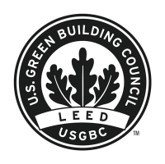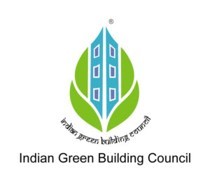SCCN Blogs
Why a building in the educational campus should be certified as Green Building under LEED/GRIHA/IGBC
What is a Green Building?
Green Building is a comprehensive framework for all activities associated with a built environment such as construction, design, operation, maintenance, transportation, and manufacturing to achieve a wide range of global goals such as addressing climate change, driving economic growth, and creating sustainable and thriving communities.
What is the Green Building Rating Systems?Green Building Rating System is an evaluation tool to measure and monitor the performance of a building and its impacts on the environment. Green Building Rating Systems formulates detailed guidelines in tune with local building codes and standards. They are developed as certification bodies to certify a building as a Green Building. A green building rating system is a third-party certification, especially from an internationally or nationally recognized organization adds to the building's credibility and desirability. Green Building Rating systems are established in every country to evaluate the performance of a
building. LEED, GRIHA, and IGBC are the most prevailing Green Building Rating Systems in India.
Why does a building need to be certified?
Green Building follows the concept of "Triple Bottom Line" like Economy, Environment, and social responsibility.
ECONOMIC BENEFITS:
- The electricity consumption in a building is during the construction phase and later in the operational phase by the lighting and HVAC system.
- A Green building uses 26% less energy and has 13% lower maintenance costs
- The initial cost of a green building is 2%-12% with a payback period of 4-5 years.
- The life cycle savings of a green building is 20% of total construction cost, more than 10 times the initial investment.
- The Green Building Rating Systems awards maximum points to Energy Efficiency Category.
ENVIRONMENTAL BENEFITS:
Carbon Emissions:- India is the 5th largest producing Green House Gases (GHG) and the world produces about 0.6 tones/year/per capita CO2.
- The sources of carbon emissions in the buildings are building construction activities, fossil fuel-driven vehicles, equipment, etc.
- A Certified Green building has 33% lower emissions of carbon dioxide.
Water Conservation:
- Indian Green Building Council (IGBC) certified green building results in potable water savings of 20-30%.
- 80% of wastewater goes into waterways without adequate treatment.
- Green Buildings use potable water more efficiently without wastage and further management of the wastewater. Treated wastewater is put back in use for landscaping and flushing.
- Green buildings account for the conservation of freshwater sources and help to reduce pressures on potable water.
Waste Management:
- Conventional buildings generate construction and demolition waste that accounts for 40% of the total solid waste stream.
- Solid waste remains untreated and sent to the landfills
- Green buildings follow the concept of 3R, Reduce, Recycle, Reuse.
- Proper Waste management strategies will help to preserve the limited land resource.
SOCIAL BENEFITS:
Health and Wellbeing:
- Poor indoor environmental quality has negative effects on the health of occupants such as asthma and sick building syndromes (SBS).
- On average, a student spends 30% of the time in schools and colleges.
- Occupants inside the green buildings are less exposed to harmful chemicals, indoor/outdoor pollutants, and emitting materials.
Mindfulness and Heartfulness:
- Good indoor environmental quality increases occupant's satisfaction reduces employee absenteeism improves productivity.
- Factors such as Daylight, Acoustics, Thermal Comfort contribute towards enhancing the Indoor Environment Quality.
- Studies have shown a green building achieves 27% higher levels of occupant satisfaction.
Ar. Durga Kamat
Intern (LEED-GA, IGBC-AP Assoc.)
Project Smart Campus Cloud Network
When you subscribe to the blog, we will send you an e-mail when there are new updates on the site so you wouldn't miss them.








Comments